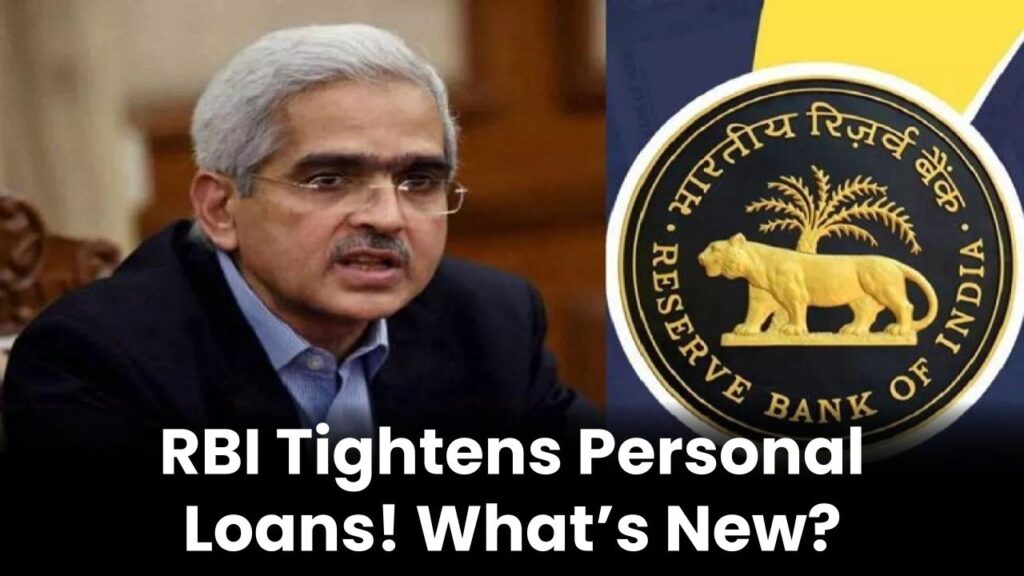
When it comes to banking safety in India, one of the biggest concerns depositors have is: What happens if my bank collapses? With the Reserve Bank of India (RBI) implementing new deposit insurance rules, it’s essential to understand how much of your hard-earned money is protected.
In this article, we’ll break down the RBI’s new deposit protection rules, how they impact you, and what you should consider before depositing money in any bank.
RBI’s New Rule
| Aspect | Details |
|---|---|
| Maximum Insurance Cover | ₹5 lakh (Principal + Interest) per bank per depositor |
| Authority Responsible | Deposit Insurance and Credit Guarantee Corporation (DICGC) |
| What’s Covered? | Savings, Fixed, Current, and Recurring Deposits |
| Joint Accounts | Covered separately from individual accounts |
| Timeline for Payout | Typically, within 90 days in case of bank liquidation |
| Official Source | DICGC Website |
RBI’s new rules offer better deposit protection, but you must take extra precautions to safeguard your money. The ₹5 lakh insurance limit applies per bank, so diversifying deposits is a smart financial move.
While Indian banks are generally safe, understanding how deposit insurance works ensures you make informed banking decisions.
Understanding RBI’s New Deposit Insurance Rule
What is Deposit Insurance?
Deposit insurance is a protection mechanism where your money is insured up to a certain limit in case your bank fails. The Deposit Insurance and Credit Guarantee Corporation (DICGC), a subsidiary of the RBI, ensures depositors get their money back if a bank goes bankrupt.
Previously, the deposit insurance limit in India was ₹1 lakh, but RBI revised this to ₹5 lakh in 2020 to offer better security to depositors.
How Does the ₹5 Lakh Insurance Work?
If a bank collapses, every individual depositor is entitled to a maximum insurance payout of ₹5 lakh—this includes both the principal amount and the accumulated interest. If you have deposits exceeding ₹5 lakh in a single bank, the excess amount is not covered under DICGC insurance.
For example:
- If you have ₹3 lakh in savings and ₹2 lakh in fixed deposits (FDs) in the same bank, you will get ₹5 lakh back if the bank collapses.
- If you have ₹10 lakh in deposits in a single bank, only ₹5 lakh is insured, and you might lose the remaining amount if the bank fails.
RBI FD Rules: Big Boost for Fixed Deposit Holders, Check RBI New FD Guidelines
RBI Penalizes Equitas Small Finance Bank & India Post Payments Bank – Here’s Why!
House Rent Rules Changed: Landlords Can No Longer Rent Out Homes – Government’s BIG Decision!
What Types of Accounts Are Covered?
The insurance covers the following types of accounts:
- Savings Accounts
- Fixed Deposits (FDs)
- Current Accounts
- Recurring Deposits (RDs)
- Other time deposits
Tip: To maximize insurance coverage, consider spreading your deposits across multiple banks.
What Happens If Your Bank Fails?
Step-by-Step Process
- Bank Declared as Failed → The RBI will declare a bank as insolvent and begin resolution procedures.
- DICGC Takes Over → The Deposit Insurance and Credit Guarantee Corporation (DICGC) starts processing claims.
- Payout Initiated → The insured amount (up to ₹5 lakh) is credited to depositors within 90 days.
- Uninsured Deposits? → Depositors must wait for liquidation proceedings to claim any excess amount (above ₹5 lakh).
Example: If you had ₹7 lakh in a failed bank, you’d receive ₹5 lakh quickly, and the remaining ₹2 lakh would be dependent on liquidation proceedings.
Additional Measures to Protect Your Deposits
1. Choose Well-Regulated Banks
- Stick to banks regulated by the RBI and DICGC.
- Check the financial health of a bank through its quarterly reports and ratings.
2. Be Cautious with High-Interest Schemes
- Banks offering significantly higher interest rates might be taking excessive risks.
- Compare interest rates with top nationalized banks for safety.
3. Use Multiple Banks for Deposits
- Diversifying deposits across different banks helps mitigate risk.
- Keep each account under the ₹5 lakh insured limit.
4. Stay Updated with RBI Announcements
- Follow RBI’s official website and financial news for updates.
- Any changes in banking regulations could affect deposit security.
5. Consider Liquid Assets for Emergency Funds
- Keep some money in liquid funds like government bonds or secure mutual funds.
- This reduces reliance on bank deposits in case of an emergency.
FAQs On RBI’s New Rule
1. Will I get all my money back if my bank collapses?
No, you will get up to ₹5 lakh per depositor per bank, including interest.
2. How long does it take to receive the insured amount?
DICGC generally pays depositors within 90 days of bank failure.
3. Are cooperative banks covered under this insurance?
Yes, all commercial banks and cooperative banks in India are covered under DICGC.
4. If I have multiple accounts in the same bank, am I insured separately?
No, all accounts under your name in the same bank are clubbed together, and only ₹5 lakh is insured in total.
5. What if I have accounts in different banks?
You are insured ₹5 lakh per bank. If you deposit in different banks, each deposit gets separate coverage.
6. Can I check if my bank is covered under DICGC?
Yes, you can verify a bank’s coverage on the DICGC official website.
7. What happens if the bank is merged with another bank?
If a failed bank is merged with a stronger bank, your deposits remain safe, and insurance coverage is not triggered unless liquidation occurs.
8. Does DICGC cover foreign bank deposits in India?
Yes, foreign banks operating in India with RBI’s approval are covered under DICGC.







